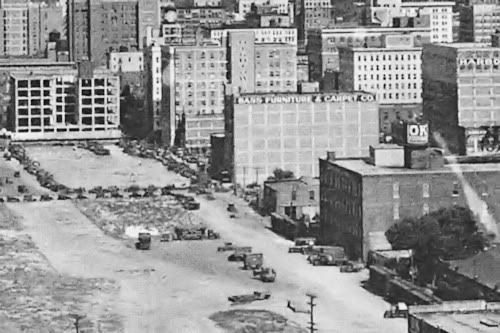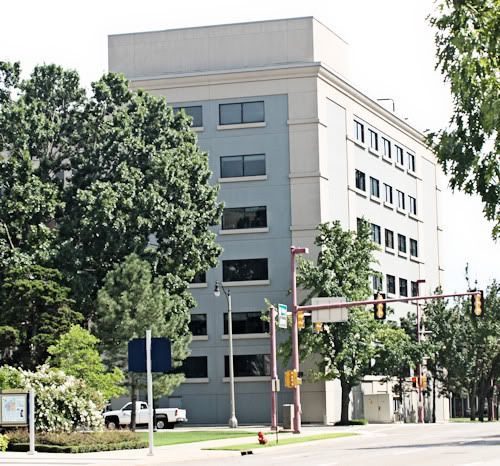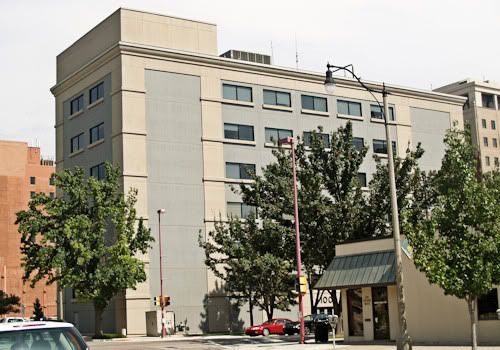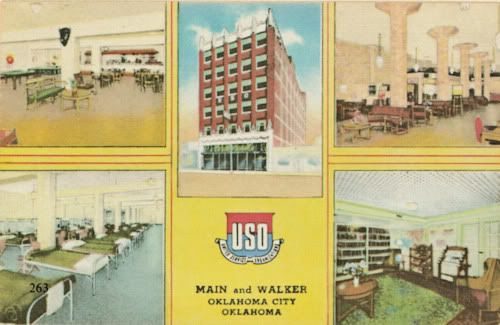
THE USO YEARS. Credit for the above postcard goes to Jim Edwards & Hal Ottaway’s Vanished Splendor II (Abalache Book Shop Publishing 1983). During World War II, downtown’s USO (United Services Organization) Club located at 431 West Main was said to have been one of the finest and largest in the land. Announcement of the new facility was made in the June 19, 1943, Oklahoman article below:
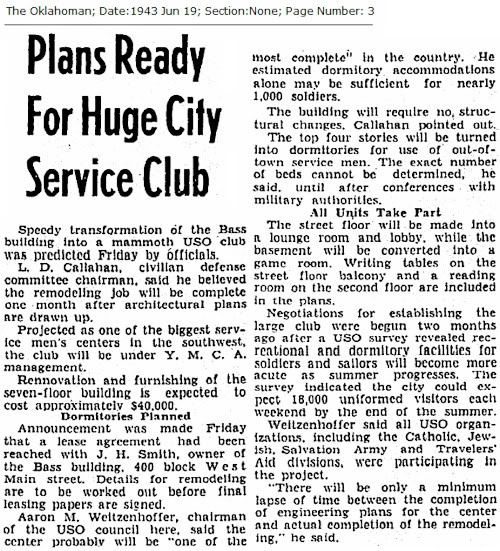
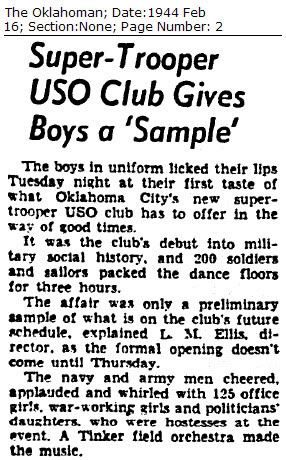 Bureaucratic delays, apparently at the federal level, caused actual construction of the project not to begin until November 15, 1943, and during the early months of 1944 activities began to occur. The February 16, 1944, article at right says a grand opening would occur on Thursday, the next day, but I was unable to locate another article reporting the actual event.
Bureaucratic delays, apparently at the federal level, caused actual construction of the project not to begin until November 15, 1943, and during the early months of 1944 activities began to occur. The February 16, 1944, article at right says a grand opening would occur on Thursday, the next day, but I was unable to locate another article reporting the actual event.
In any event, by all reports, this facility provided a home away from home for service members including “correspondence desks, laundry facilities, big comfortable divans, overnight bunks, a library, chess and checkers, ping-pong, archery, and a cookie jar,” according to Vanished Spendor II. The Club remained open through the duration of the war, closing sometime in 1946. But, it wasn’t originally a USO.
BEFORE IT WAS A USO. The building wasn’t new in 1944. Its origins go back to 1930 when it opened as the new home of Bass Furniture & Carpet Company with the usual newspaper splash that occurred when significant new buildings were built downtown. Bass had been a long-time retailer in Oklahoma City with an earlier location as shown in the October 4, 1925, Oklahoman advertisement shown below. The ad shows the earlier location to have been 19 W. Main, just west of the Santa Fe Railroad tracks. For reference that location would be east of the Huckins Hotel and on the north side of Main.
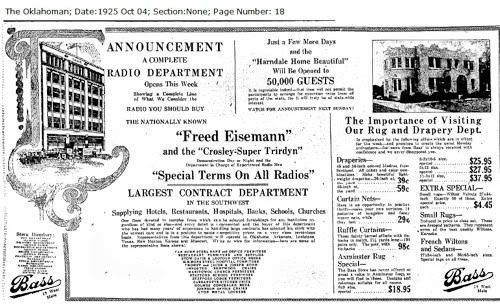
Several pages of ads appeared in the June 29, 1930, Oklahoman on the new building’s grand opening, shown below. To read the article which described the building in some detail, click here.
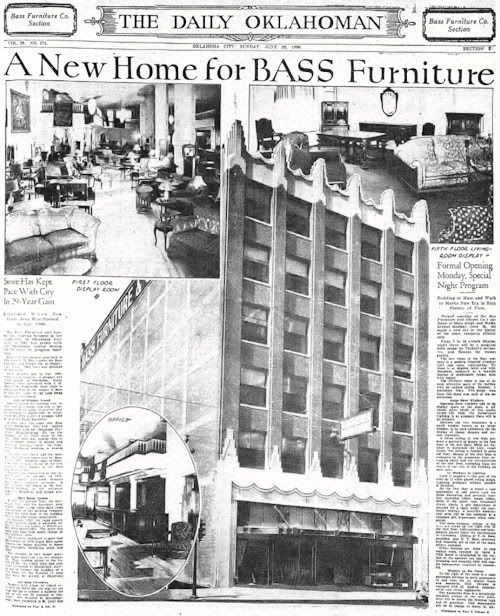
This ad shows that the building was another Reinhart & Donovan project
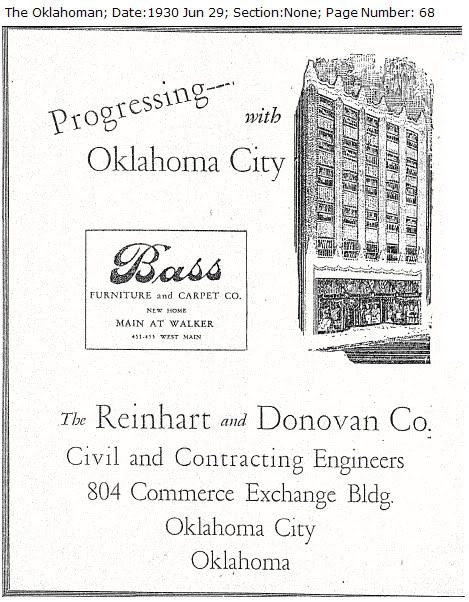
This one is interesting because it tells something of the past shared between Harbour-Longmire and Bass Furniture & Carpet:
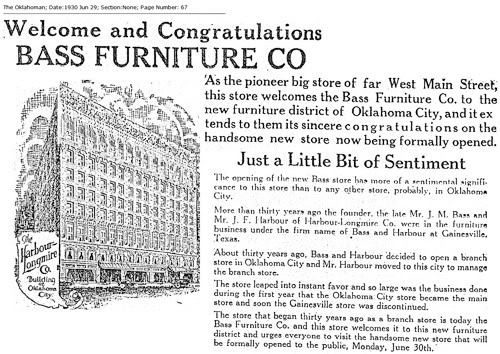
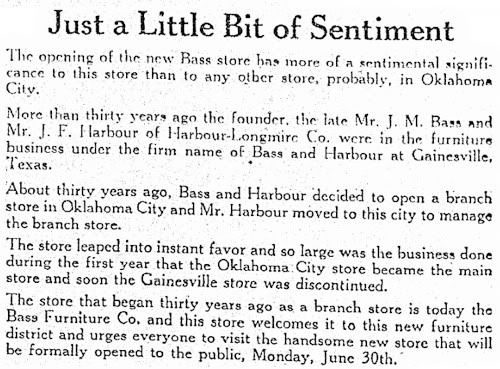
This image from Terry L. Griffith’s Oklahoma City: Statehood to 1930 (Arcadia 2000) shows the Civic Center area around 1929-1930; the cropped view better shows the Bass Furniture & Carpet Building.
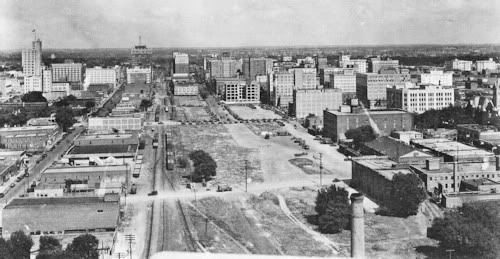
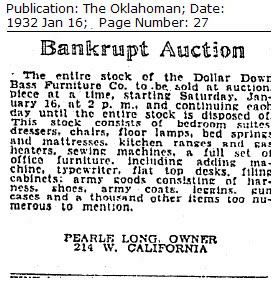 Less than a year of it’s opening at the new building, the company fell on hard times and was bankrupt. Ads, such as this one in the May 31, 1931, Oklahoman announced the closing. Although the word, “bankrupt,” did not appear in those ads, the January 26, 1932, item at the right did. As you will see below, the federal government and another failed business or two occupied the property beginning around 1934. In 1940, a store with the same name reopened in the property as shown by this March 10, 1940, ad but that didn’t last long, either.
Less than a year of it’s opening at the new building, the company fell on hard times and was bankrupt. Ads, such as this one in the May 31, 1931, Oklahoman announced the closing. Although the word, “bankrupt,” did not appear in those ads, the January 26, 1932, item at the right did. As you will see below, the federal government and another failed business or two occupied the property beginning around 1934. In 1940, a store with the same name reopened in the property as shown by this March 10, 1940, ad but that didn’t last long, either.
So, when the USO operation described at the first of this article began, the building, apparently fairly impressive and well-constructed, had experienced a less than stellar existence. An August 14, 1955, Oklahoman article reported that in 1934 the building was used as the headquarters for the FERA (Federal Emergency Relief Administration) and was also proposed for use as the Oklahoma City Hall before the Civic Center project got underway. (In that regard, also see this August 20, 1959, article.) The August 1955 article says that the building was leased by federal agencies until 1936. It also notes that after the USO Club ceased its operations that it remained empty for a time until 1947 when it was purchased by yet another department store which failed at the location. Later, it became Wilmor Department store but it had ceased operations in the early 1950s, probably in 1951.
The old use died hard. The same Oklahoman article just mentioned announced that a new tenant, Irving Klein of Dallas, was set to open yet another department store in August 1955. The article’s picture of the building in 1955 is shown below.
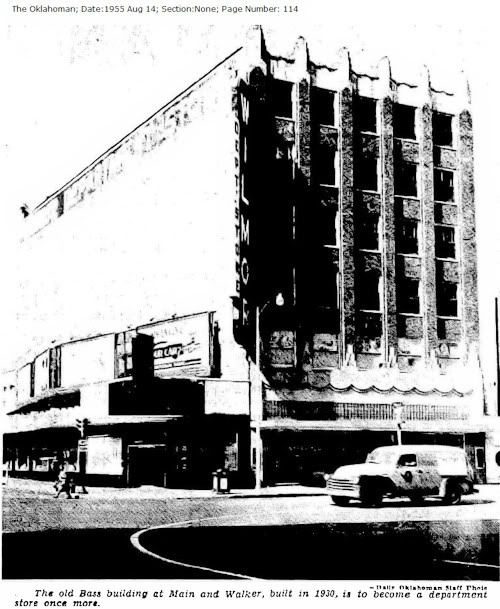
If that department store ever opened, I couldn’t find that it did. Instead, about a year later, yet another tenant, Carl W. “Bill” Kizer, would be opening a store and he did in September 1956. See this August 26, 1956, article and the September 30, 1956, article which announced the opening. This time, it was no different. In this March 9, 1958, small notice it was announced that Spivey & McGill, a pioneer home furnishings store, were moving into the property. They did, but that business closed in 1960, per this October 19, 1960, ad.
SO, WHAT’S IT ALL ABOUT, ALPHIE? If you read my articles very often you know that I’m basically “linear” in my approach — I like to start at the beginning and progress to an orderly conclusion. This time, I didn’t — I started in the middle, went back to the first, and now jump forward to the present.
Have you figured out what this venerable old 1930 building is today? If you drive by City Hall very often, you drive right by it and perhaps have even entered its door. Today, the building is unimaginatively named the “100 North Walker Building,” its new address.
Here’s how the “rest of the story” developed.
In the January 1, 1978, article below, notice that Fred Spitz & Associates were completely remodeling the old building by striping it down to its core (in the same manner that the Skirvin Tower became the 101 Park Avenue Building). The drawing and proposed use are shown in the article — the Spitz firm would occupy two floors but would lease most if not all of the remainder to the City of Oklahoma City.
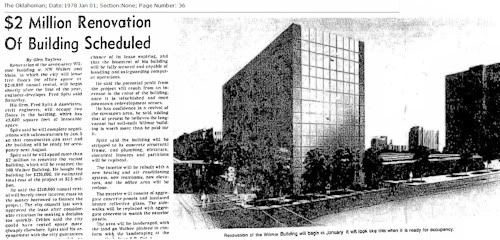
In the October 10, 1978, article, below, you can see the progress that had occurred.
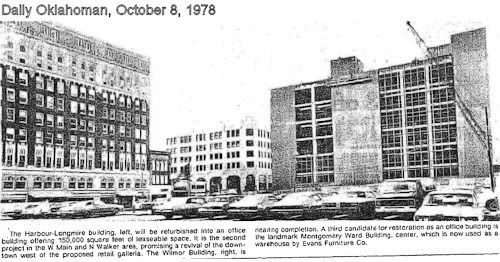
This January 1, 1979, article describes that city employees were set to move into the building. The next year, the city would simply purchase the building as its own per this February 20, 1980, article. Most recently, the city spent $2.7 million for a 1996 renovation intended to modernize the building’s exterior, per the January 28, 1996, Oklahoman article below.
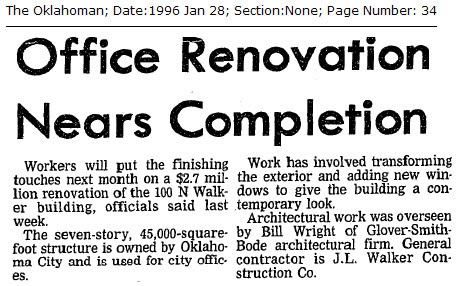
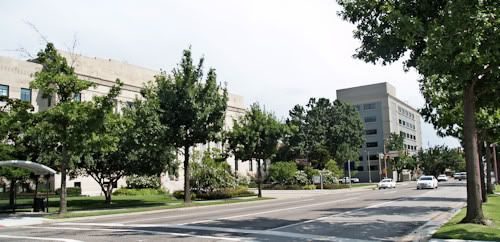
As Paul Harvey used to say, “And, now you know the rest of the story.”

